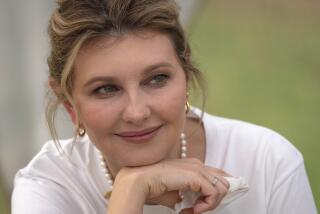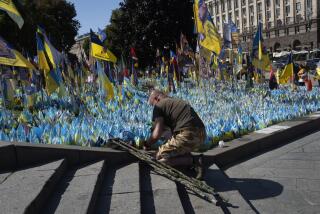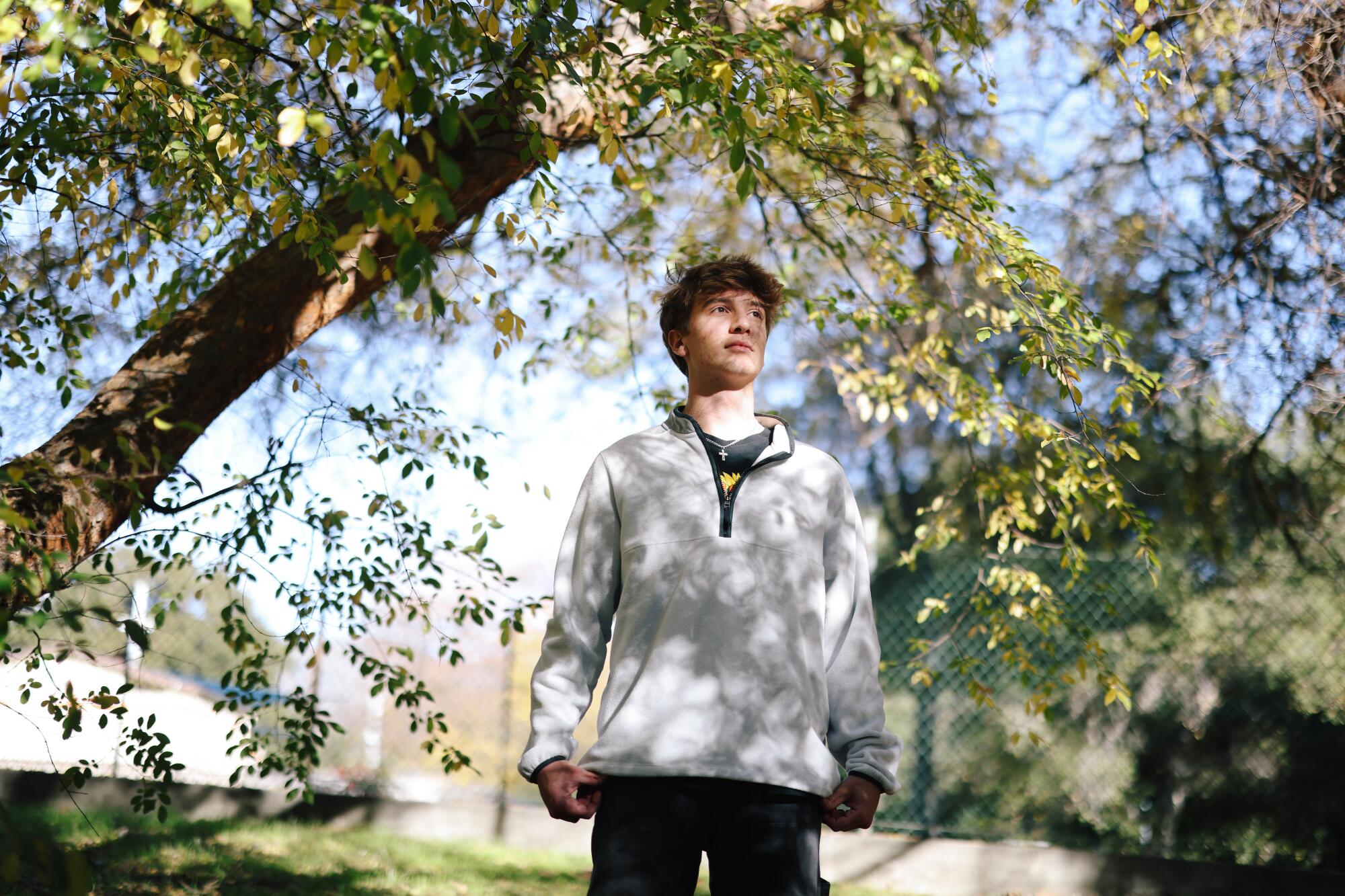
Mykhailo Hrabymskyi’s last Christmas in Western Ukraine was like the 16 that came before it. His family gathered for the traditional feast of 12 dishes. They went caroling. They attended church.
But this Christmas, 10 months after Russia invaded Ukraine, his family is scattered across the globe. His mother and younger sister are in London. His father is in Denmark. His grandma is alone in their small town, Dobrotvir, which was bombed two weeks ago by Russian forces.
“I have no relatives here, I have no family,” said the 19-year-old Glendale Community College student.
Hrabymskyi and his family are among the millions of Ukrainians displaced by the Russian invasion and subsequent war. While nearly 8 million have found refuge in other European countries, the United States has welcomed more than 100,000 Ukrainians this year.
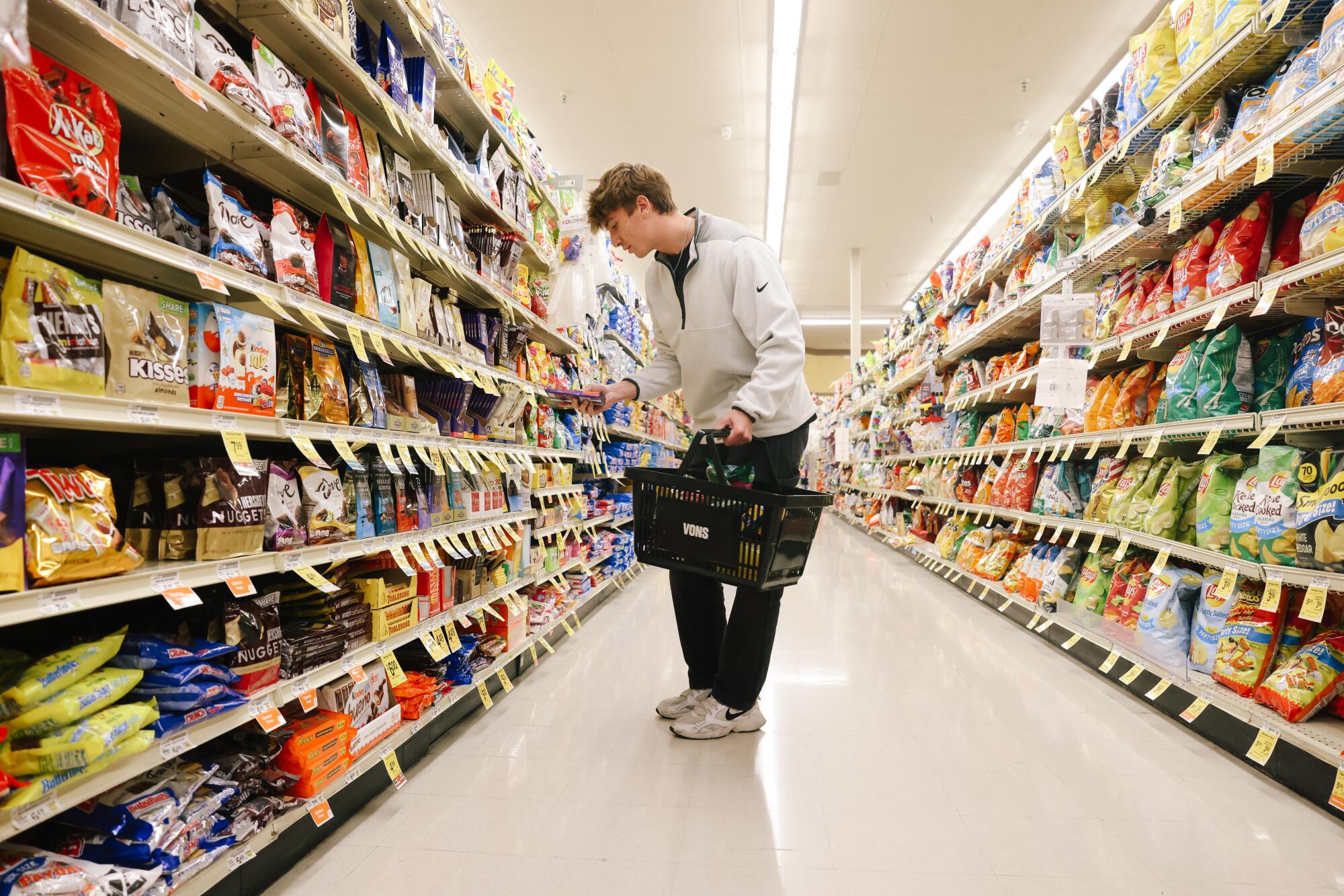
Los Angeles is one of the top metro areas where Americans have applied to sponsor Ukrainians, according to a CBS analysis of Department of Homeland Security data. California had the third most applications — trailing New York and Illinois. All have significant Ukrainian American populations.
Hrabymskyi left Ukraine on a basketball scholarship a few months before the war started.
His goals were to learn English and experience a new culture for a year before returning home to pursue his dream of studying computer science at a university in Lviv. It’s a city, he said, where he feels peace unlike anywhere else, a city that “feels like home.”
Last December, he videoconferenced into his family’s festivities. “They were all gathered together,” he said, “and I was there mentally.”
He was in the L.A. area when the war started, and, while “nothing changed around me, but a lot of things changed inside of me.” He said he felt an “emotional explosion.”
“It’s just that feeling that you see things and you don’t believe it first,” he said. “And then everything starts coming at you. Like, you know, like waves from like, I don’t know, just your thoughts and everything. And you’ve been speechless. You don’t, you don’t understand what’s going on and be like, your chest is like, you know, squeezing, you cannot breathe.”
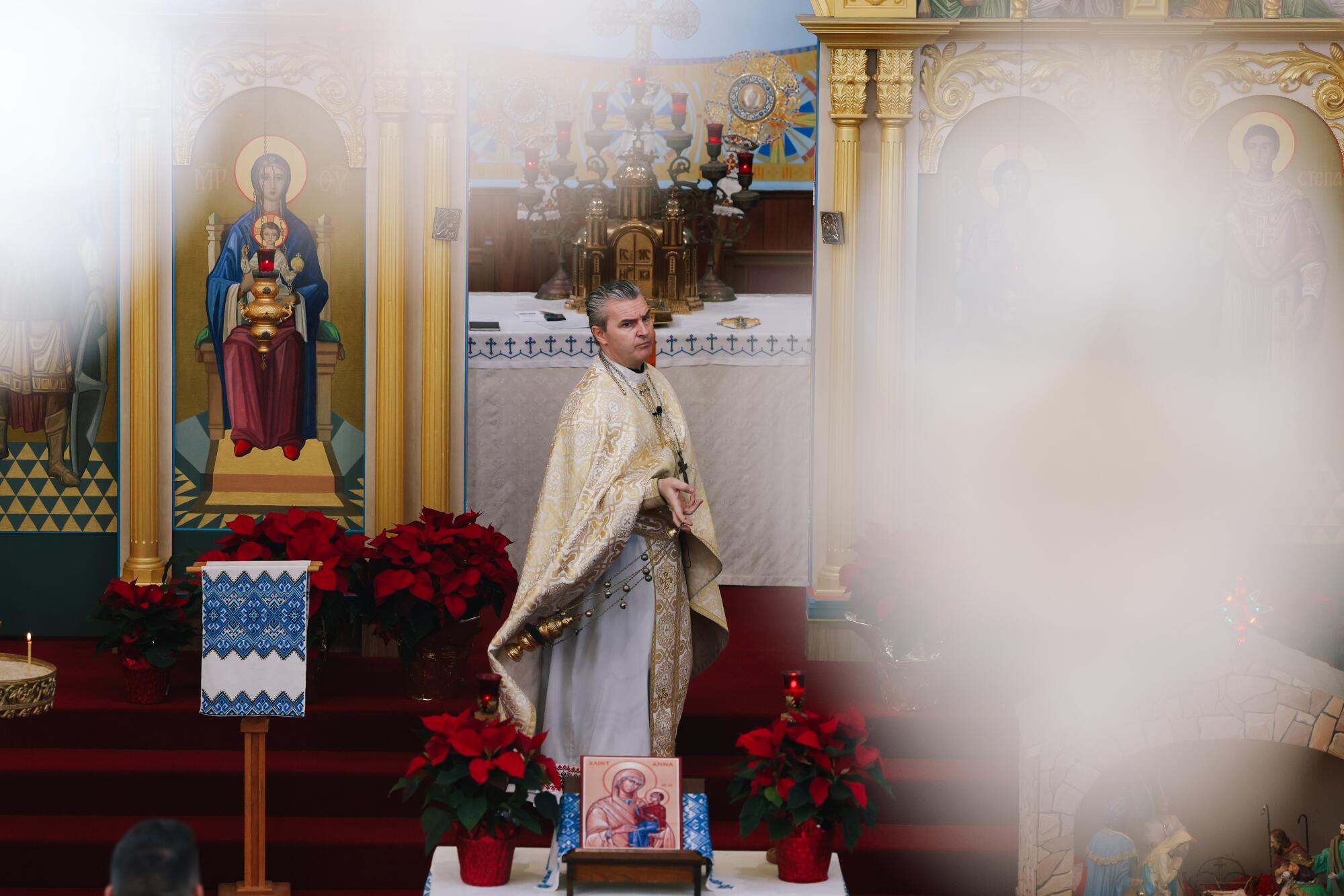
He realized he would have to stay in L.A. and would have no place to live after graduation. So he sought out the Ukrainian American community in Los Angeles and began attending Nativity of Blessed Virgin Mary Ukrainian Catholic Church in Little Armenia. The church members have helped build a supportive community for Hrabymskyi.
This year he wants to “be surrounded by Ukrainians and Ukrainian energy,” to sing songs and have dinner with people from church.
And he is trying to stay positive for the future. “I hope for the war to end as soon as possible and I will be able to go home again and experience all of the things I felt before and I didn’t appreciate.”
The current wave of displaced Ukrainians is the fifth to immigrate to the United States. The first was in the late 1800’s until the start of World War I. Since then, the Ukrainian American community has made an effort to build Ukrainian culture, infrastructure and identity in the U.S.
“We need to think about the Ukrainian infrastructure that’s in place here, thanks to previous migrations of Ukrainians to this country. And the thought that we would one day be leveraging that very same infrastructure for another large group of migrants to this country is surprising.” said Laryssa Reifel, President of the Ukrainian Cultural Center of Los Angeles.
Reifel’s grandparents came in the third wave of Ukrainian refugees, which happened after World War II and the Holodomor, a genocidal famine perpetrated by the Soviet Union in 1932 and 1933, which killed millions of Ukrainians. They settled first in New York City and then in Chicago, the cities with the largest Ukrainian diaspora communities.
To mark this first post-war Christmas, the nativity play at First Ukrainian Assembly of God in New York will be reimagined. The theme: Hope in the Dark, a reference to the gloom of armed conflict and the resulting power outages in Ukraine because of Russia’s attacks on the electric grid.
The play will also draw inspiration from Jesus’ status as a refugee at birth, said Ivan Belets, lead pastor.
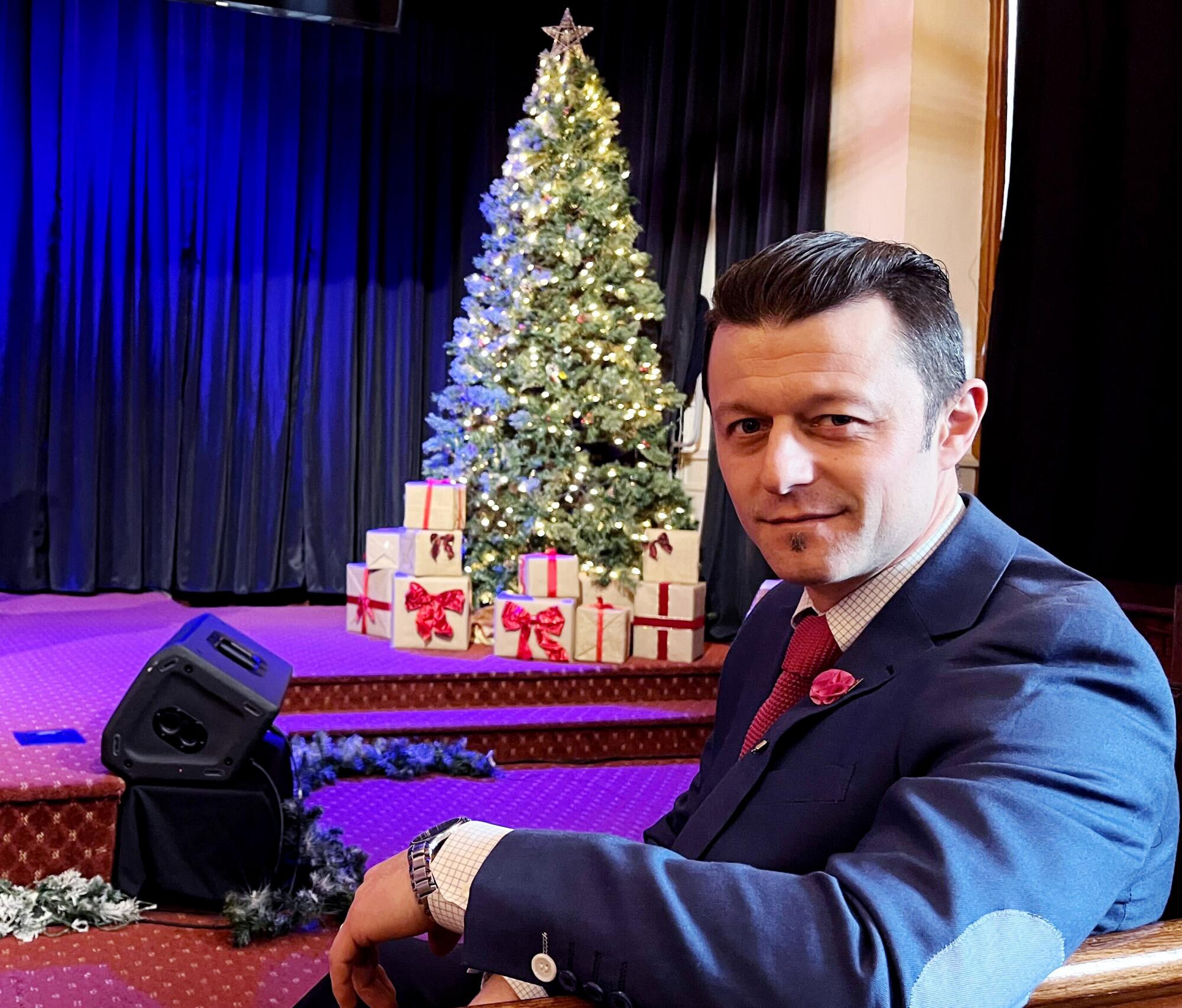
“We don’t want to avoid or run away or suppress the sadness or reality of pain, of loss,” Belets said. “We have a lot of ladies with kids here, and their husbands are left behind in Ukraine. And for them, it will be very sad, Christmas being apart.”
For many Ukrainian Christians, this year’s Christmas will be the first spent far away from loved ones and the traditions they know.
Nadia Lunyk will not only be celebrating her first Christmas in America, it will be the first time she is marking the festival on Dec. 25 and not Jan. 7 as many Ukrainian Orthodox Christians do. The shift in worship, she said, is one way some Ukrainians are breaking away from the influence of the Russian Orthodox Church.
Lunyk, 35, arrived in the U.S. in October with her teenage daughter and the family dog after they fled from Lviv to Poland at the start of the Russian invasion. While in Poland, she was selected for the green card lottery, which allowed her to come to the U.S.
So far, they’ve commuted from nearby Jersey City to New York to see Times Square, Central Park and the famous Christmas tree at Rockefeller Center, tracking some of the scenes from the Christmas movie “Home Alone 2,” she said.
Previous Christmas celebrations in her family involved a 12-dish spread representing the dozen apostles of Christ at her mother-in-law’s house.
“Her food is perfect,” Lunyk said. The star of the dinner table is varenyky, a dumpling often made with a potato filling. “She did it in a special way; every dumpling is like a piece of art,” she recalled fondly. “She makes them with her hands and she makes braids on the corner of the dumplings.”
Far from home and her mother-in-law’s cooking, Lunyk said it is important for her to try to replicate as much as she can to instill the tradition in her daughter. She said she plans to cook a holiday dinner — with some, but not all 12 of the customary dishes.
For photographer Olenka Kotyk, her grandmother’s fish dishes will be most missed as she prepares for her first Christmas outside Ukraine. But, kutia, a sweet pudding, is the curtain-raiser for the 12-dish Christmas Eve feast and a must-have at her family’s table.
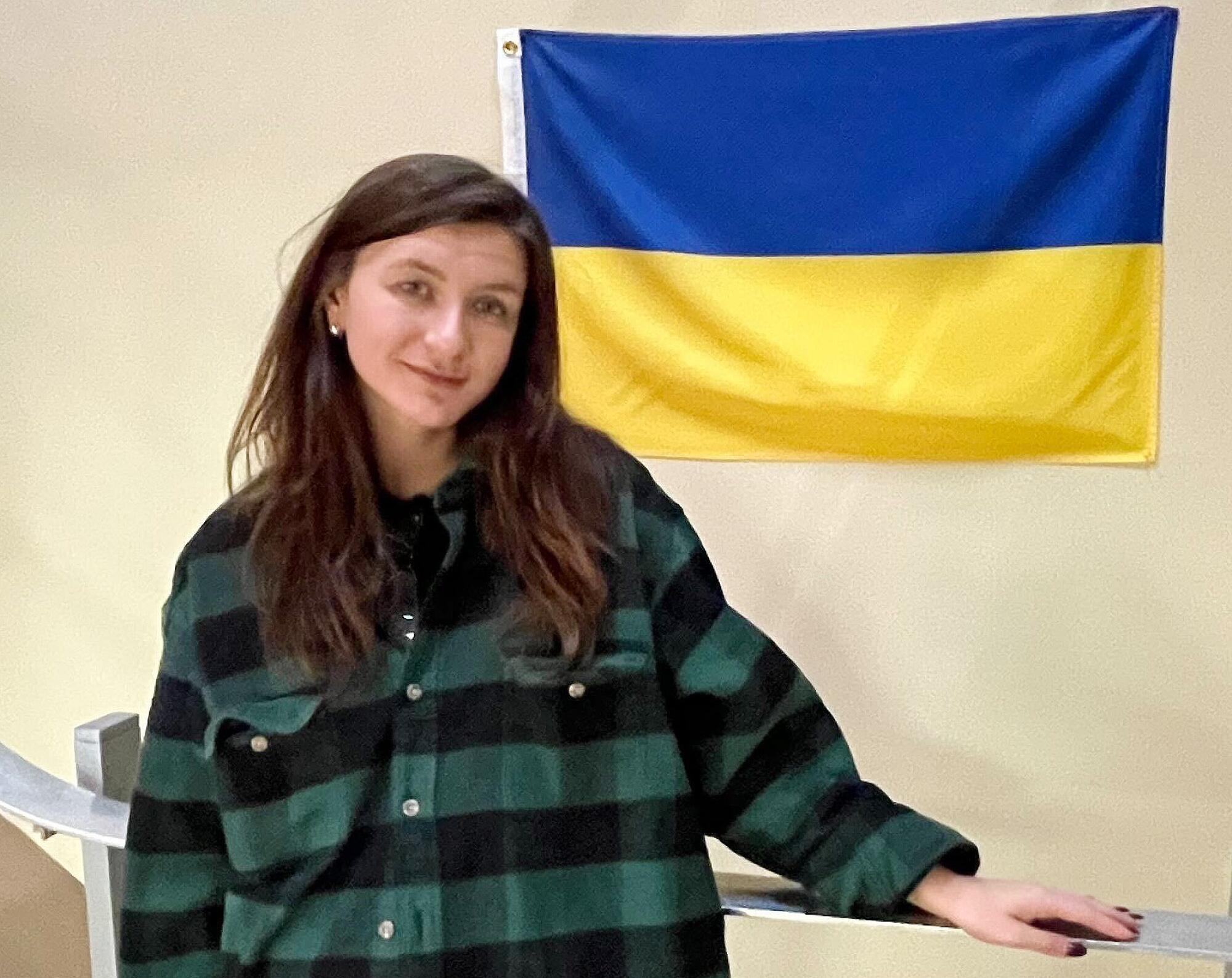
“I think every family in Ukraine has their own recipe,” she told The Times in New York. Hers is made of boiled wheat, poppy seeds, raisins, honey and dried apricots. It is served after her grandmother has prayed, thanking God and remembering relatives who have died.
Kotyk, 28, who came to the U.S. in August, recalled childhood Christmases where together with her brother and some friends, they would go house to house to sing carols, especially “Shchedryk,” the original Ukrainian version of the American classic “Carol of the Bells.”
This year, the holidays and the war — which has forced her to be far from home — have caused her to be more appreciative of family and time spent together in a way she hadn’t been before.
“I don’t remember a Christmas when we were not together,” Kotyk said. “I just want to be with them next year…Before this war, I did not realize that that was so important for me.”
Licari reported from Los Angeles and Asiedu from New York City.
More to Read
Sign up for Essential California
The most important California stories and recommendations in your inbox every morning.
You may occasionally receive promotional content from the Los Angeles Times.

